NVIDIA Tegra Note 7 Review
by Brian Klug on November 12, 2013 9:01 AM EST- Posted in
- Tablets
- Mobile
- Tegra 4
- NVIDIA
- Tegra Note
Performance
Obviously the highlight from NVIDIA’s perspective is the Tegra 4 SoC inside Tegra Tab, which in this case is clocked at a maximum single-core CPU frequency of 1.8 GHz. This is just short of the 1.9 GHz max single CPU clock in Shield. Of course Tegra Tab lacks the benefit of the active cooling system Shield has and has an accordingly lower TDP.
After reviewing and investigating Shield I discovered a bit more about the different tiers or bins of Tegra 4 SoCs available to OEMs, which are binned into a few SKUs and capped with different maximum currents. I did a bit of digging, and the SoC inside Tegra Tab is T40S (as opposed to the T40X inside Shield, although the real name is T114).
The specific breakdown is that the SoC is a SKU 5 part, and has the 6 A current cap in place, or 8 watts. In addition to the CPU clock frequency differences I touched on, the GPU inside also sees its clocks go down a bit from the 672 MHz in Shield, to 600 MHz inside Tegra Tab, for a roughly 12 percent theoretical performance difference in GPU compute power.
We covered most of the performance breakdown with Tegra 4 in the NVIDIA Shield review, and at this point Tegra 4 is pretty well understood. That said I still ran the tablet through our usual set of tablet benchmarks to see how the device fares given the theoretical performance offset from Shield.
CPU Performance
We start with our CPU related benchmarks which consist of a mix of JS benchmarks and a few others.
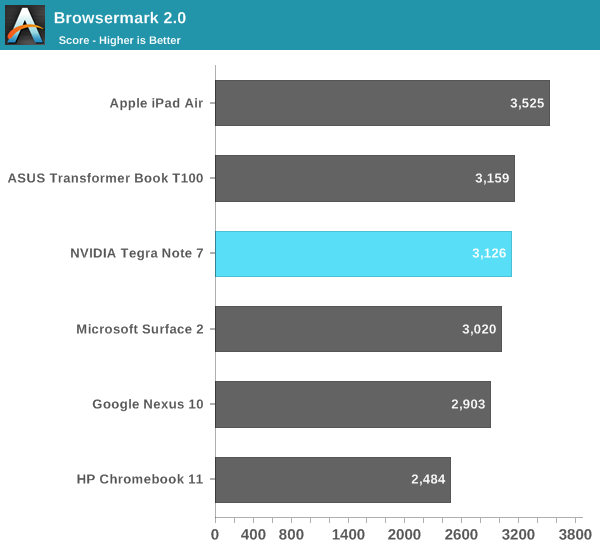
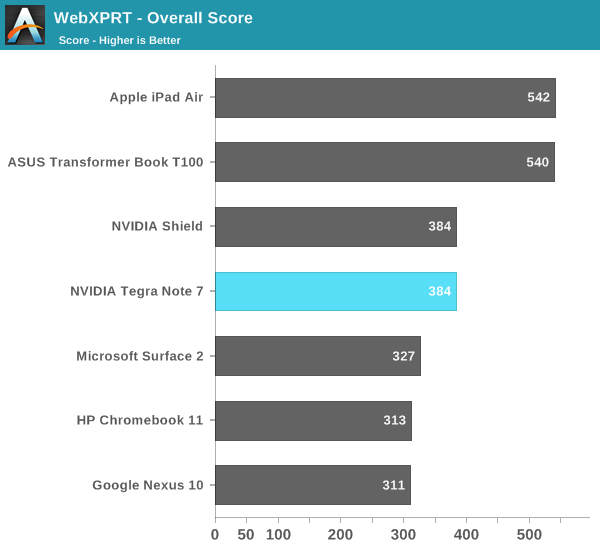
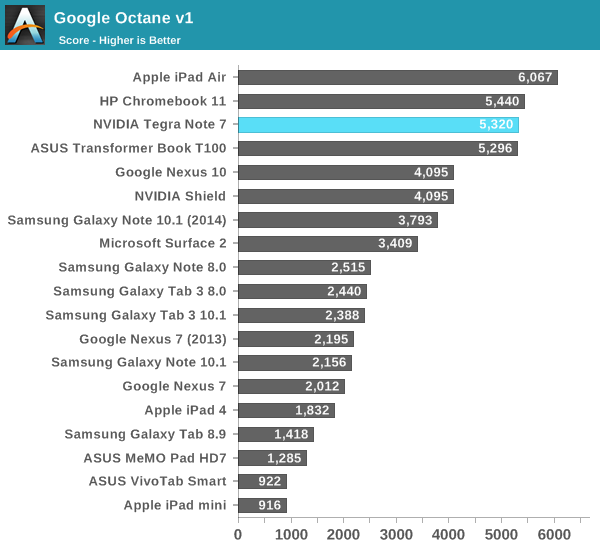
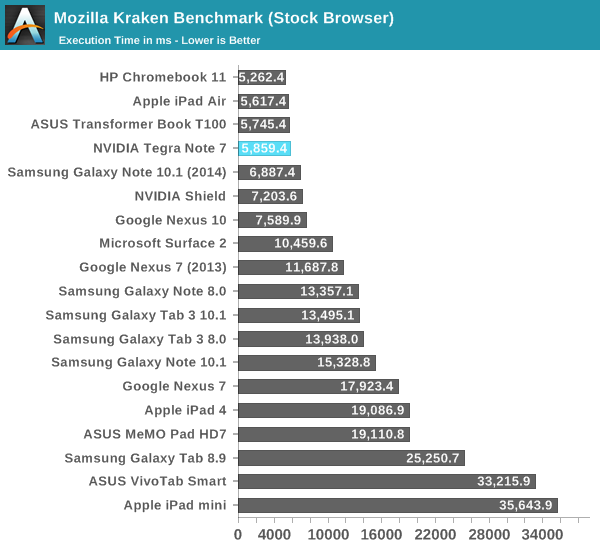
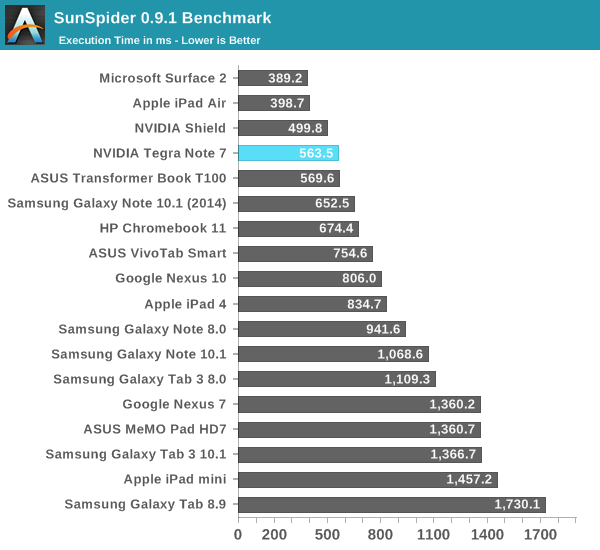
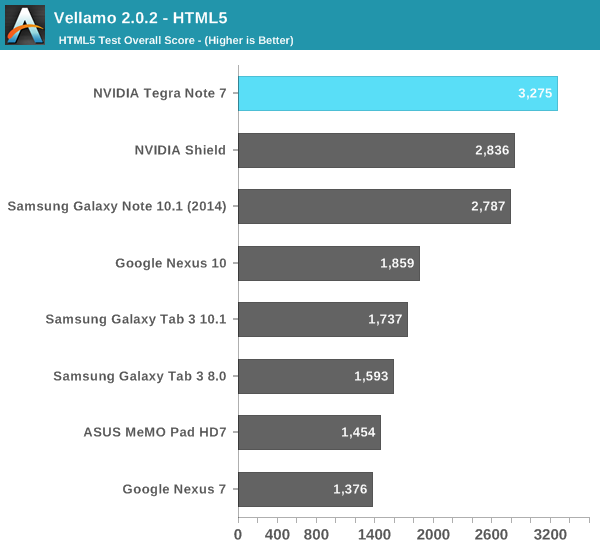
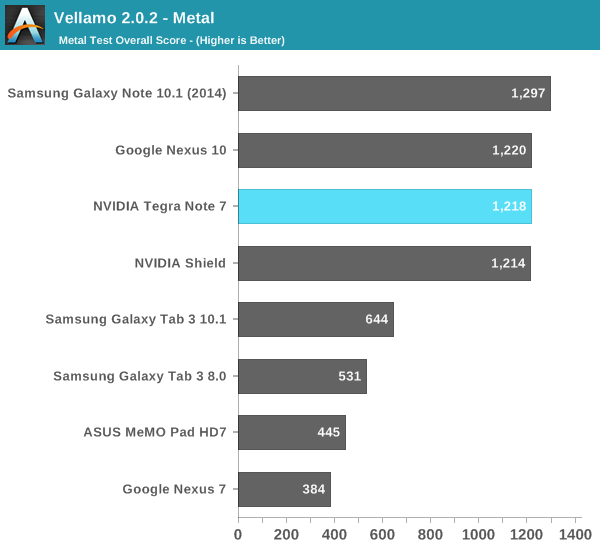
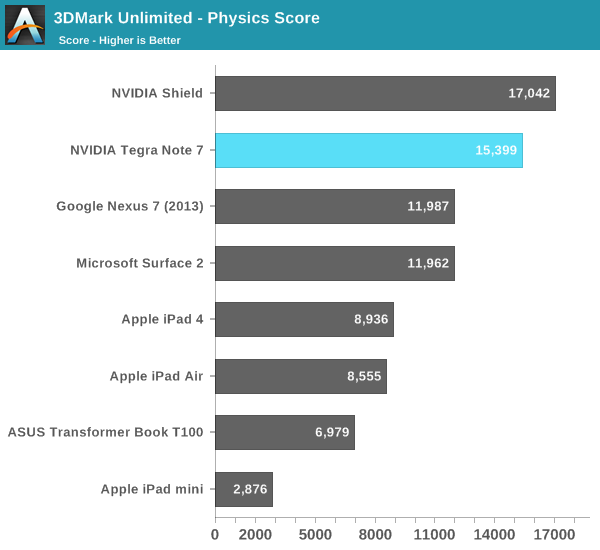
I only included sunspider 0.9.1 since oddly enough the Tegra Note gives not a number (NAN) results for a few subtests when running sunspider 1.0 both in Chrome and the stock browser. I recollect seeing this intermittently on a few devices in the past, but couldn’t get a score to generate despite repeated runs and reboots. The rest of the web benchmarks actually have crept up since we looked at Shield, which is my comparison point. There’s no doubt that 4 Cortex A15s with a 1.8 GHz maximum makes for a very speedy device, and the Tegra Note performs very well in essentially all the CPU bound tests.
GPU Performance
On the graphics side we turn to the usual assortment of 3Dmark, Basemark X, and GFXBench (formerly GLBenchmark 2.7) for comparing performance. Just to reiterate from the Shield review, the GPU performance story in Tegra 4 really changed versus Tegra 3, with enough die area dedicated to GPU to make it competitive with the best in the space. We turn to a mix of onscreen (remember that Tegra Note’s display is 1280x800) and offscreen (1080p) tests. 3DMark Unlimited is a new mode in that benchmark which we don’t have many scores from, but it allows for better resolution-independent testing thanks to a better offscreen mode. We have a smattering of scores from the normal and Extreme modes, but not everything because 3DMark now shows "Maxed Out" for these results that are at vsync.
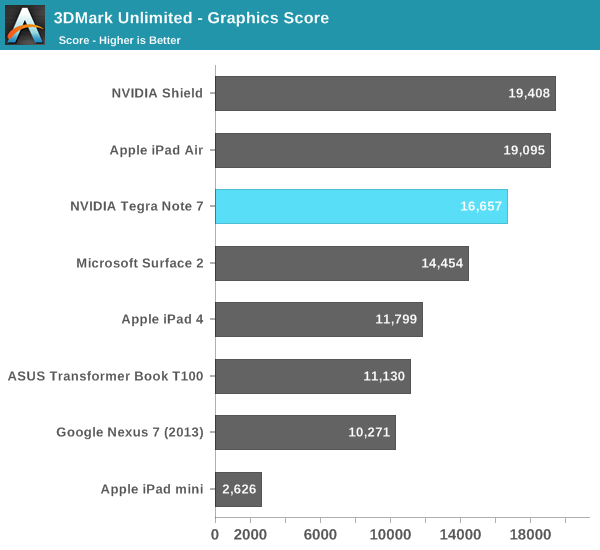
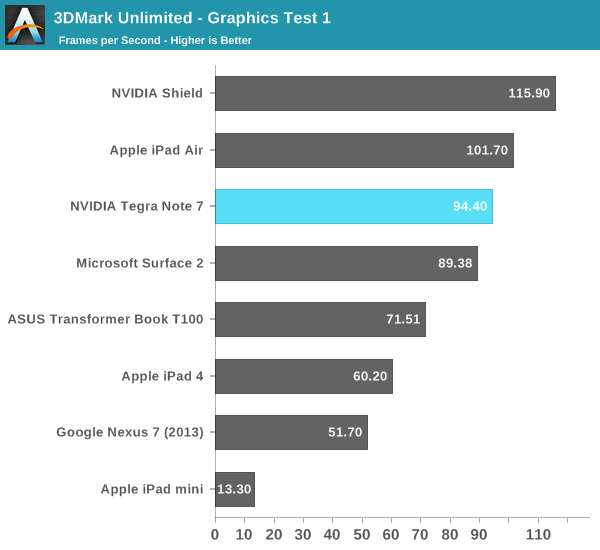
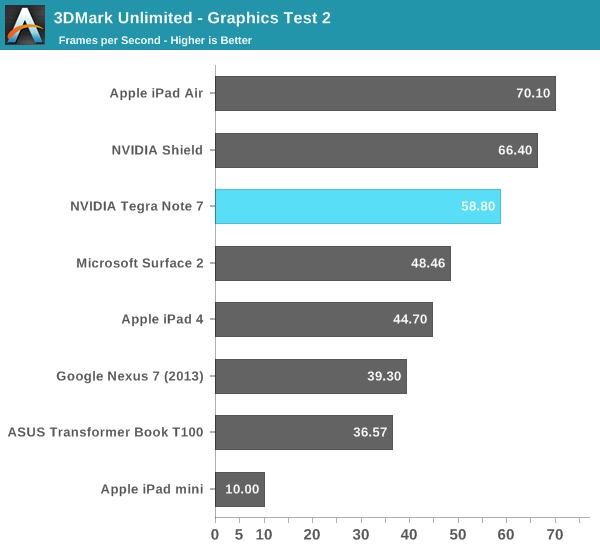
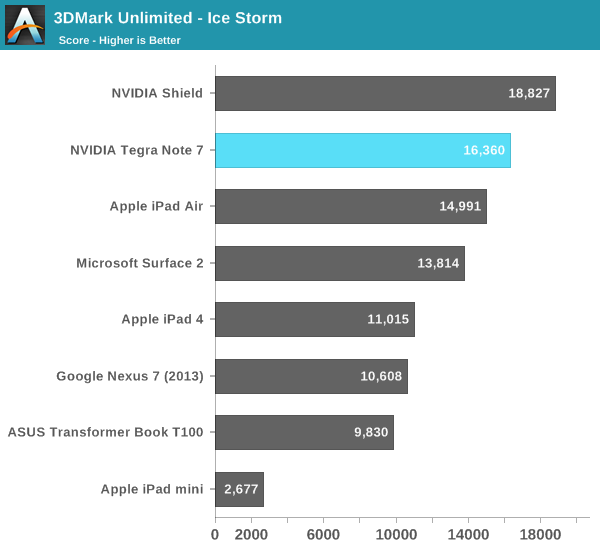
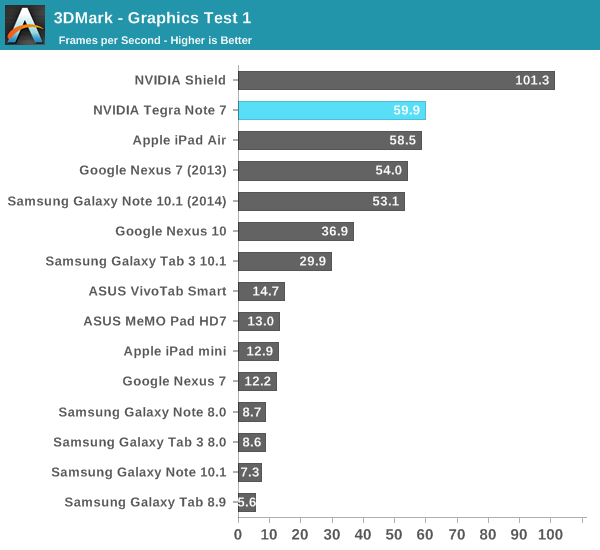
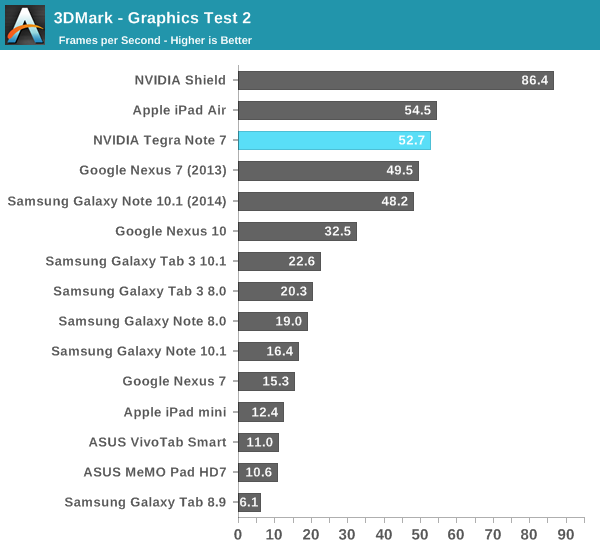
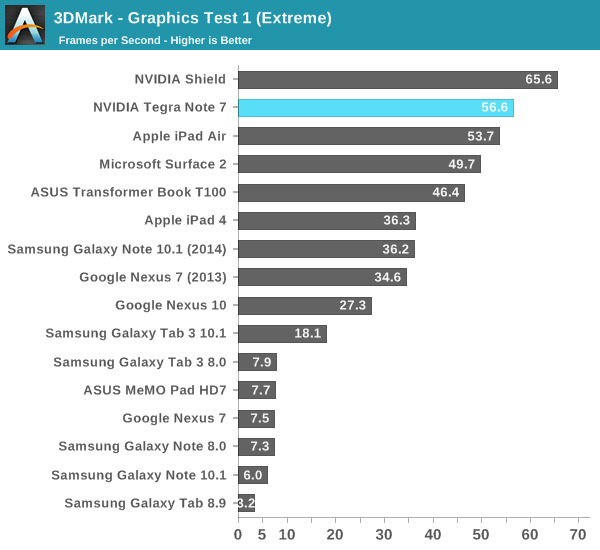
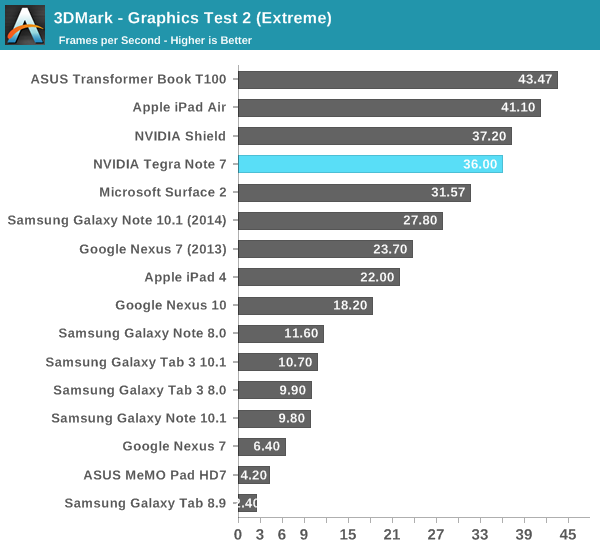
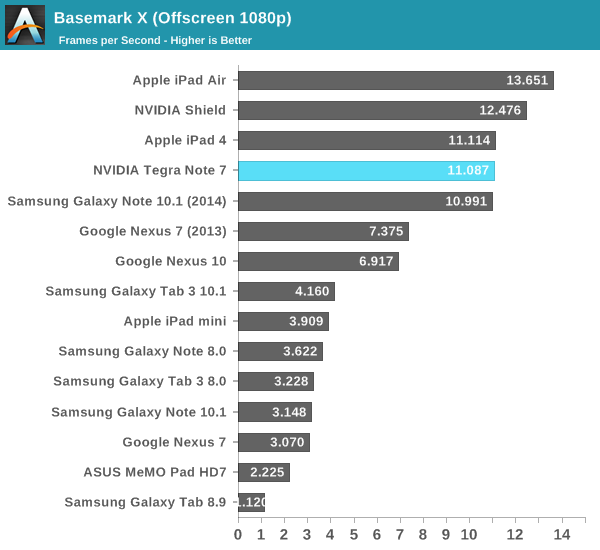
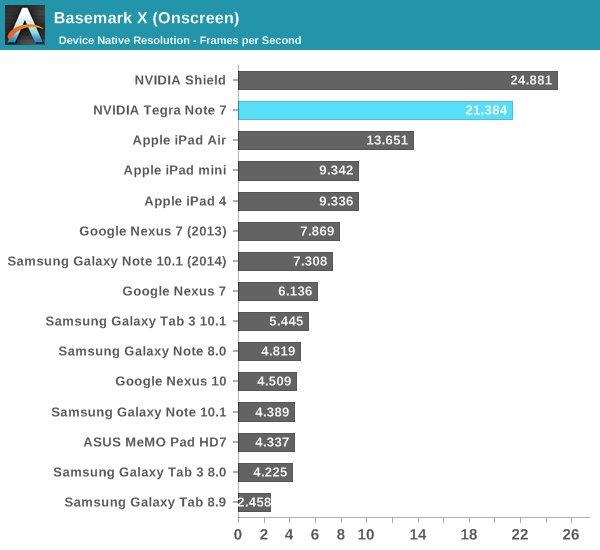
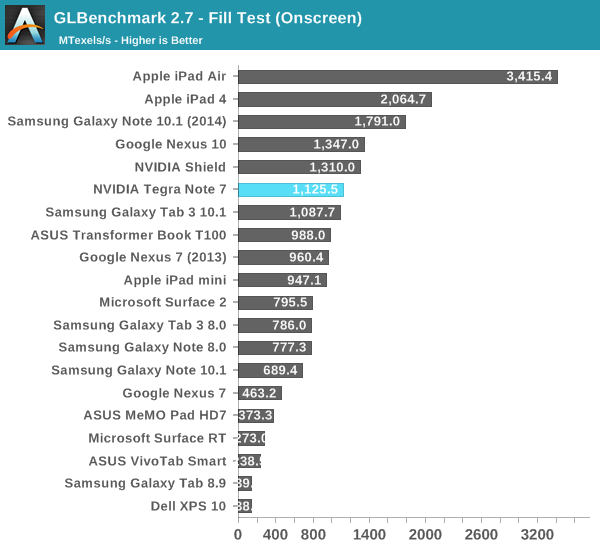


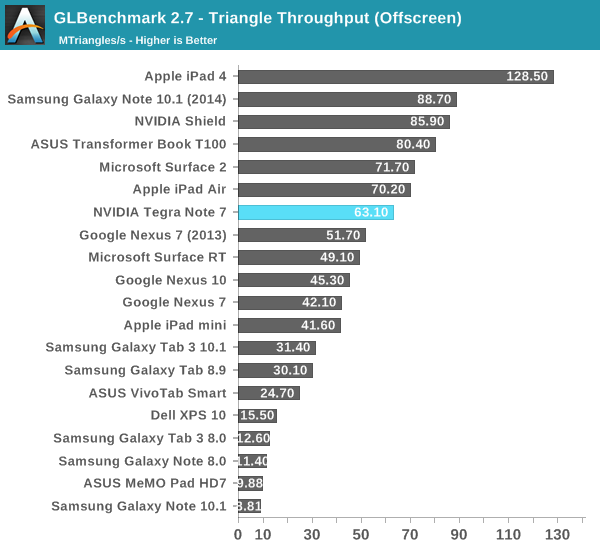
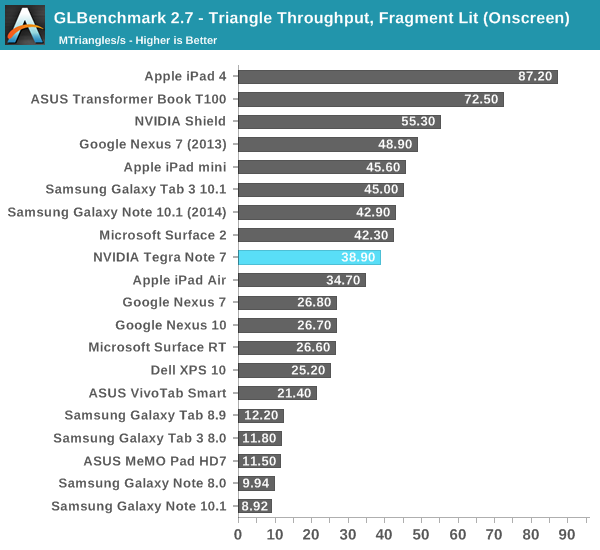
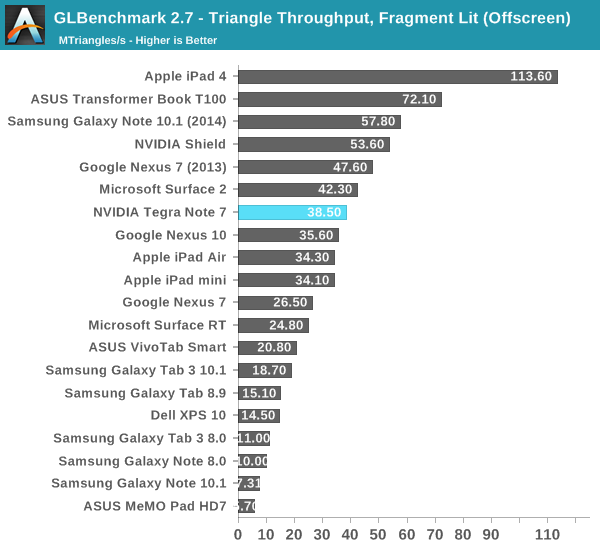
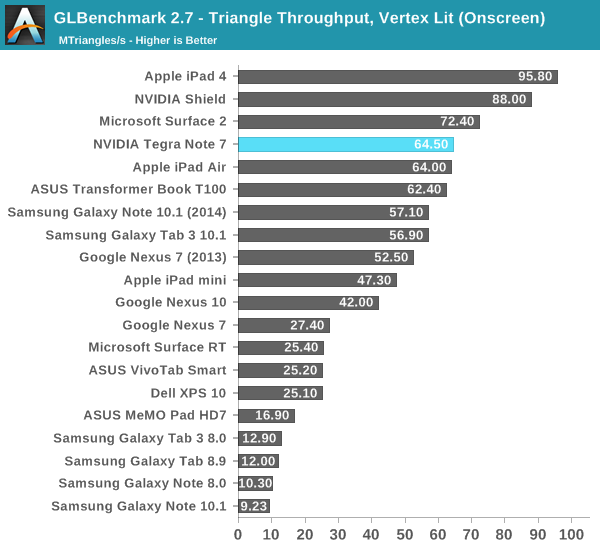
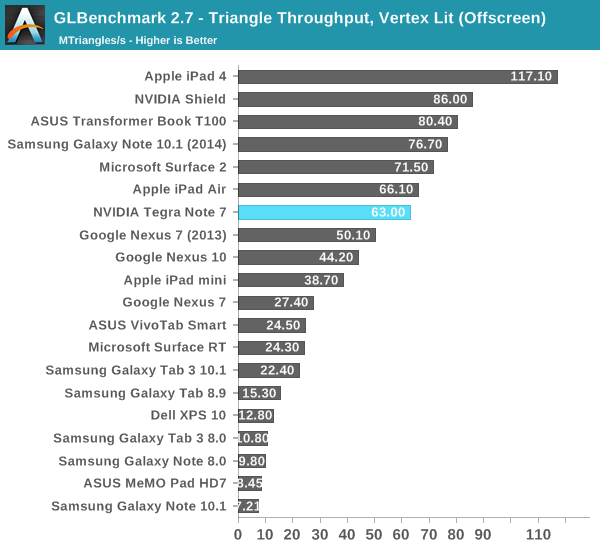

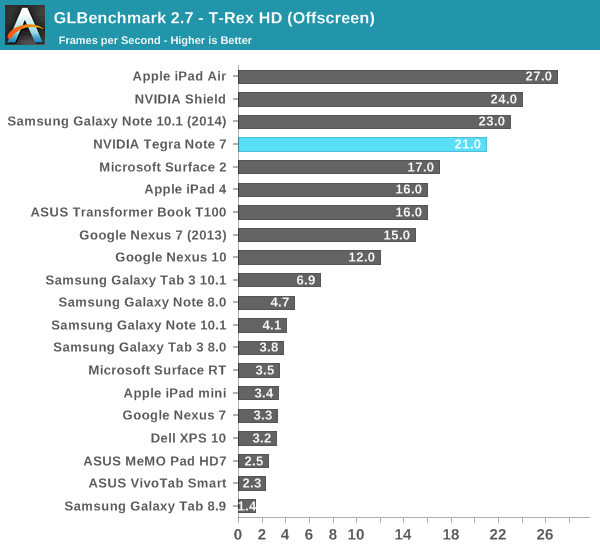
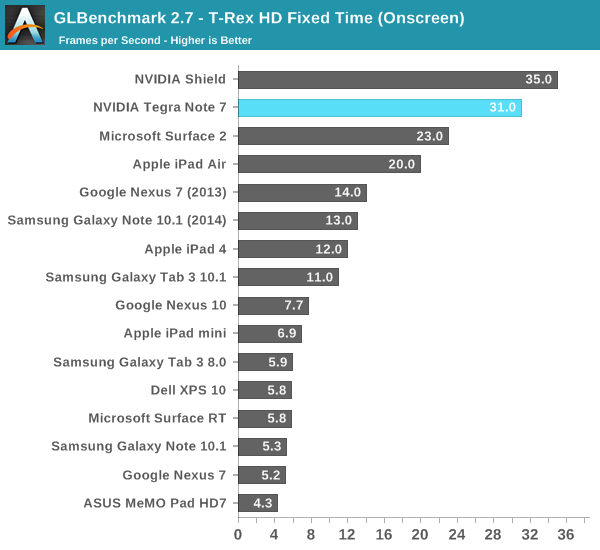
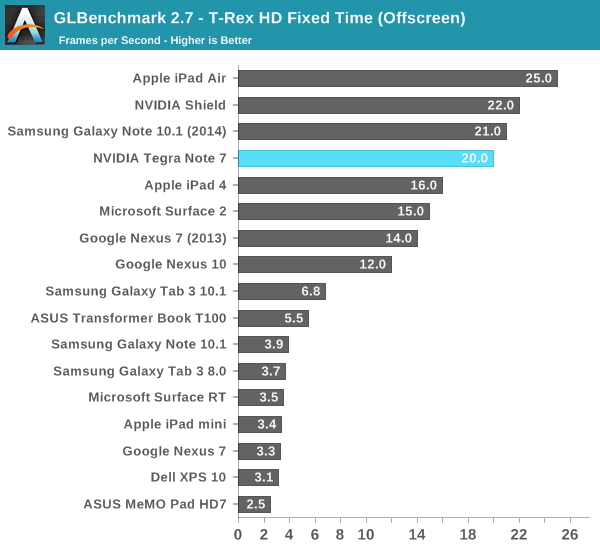
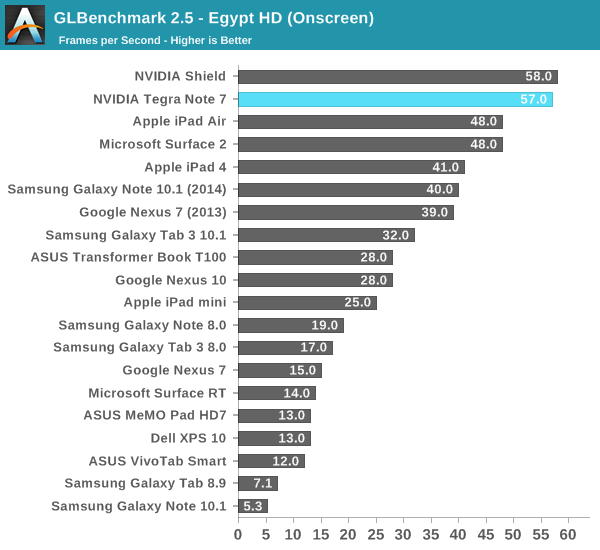
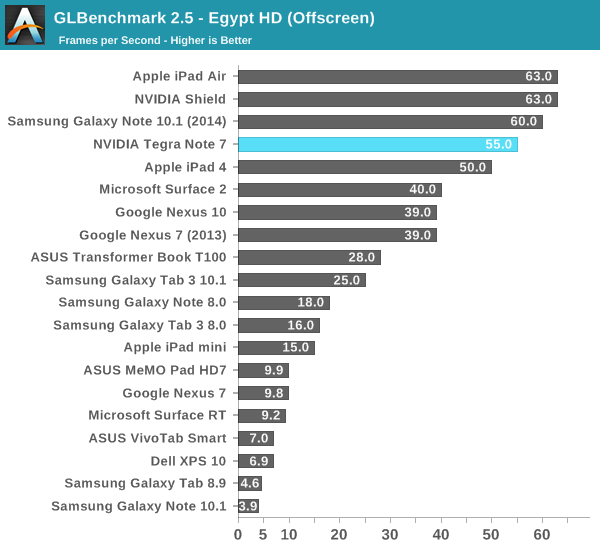
Mostly we see the roughly 10 percent GPU performance delta fleshed out in the compute bound tests. There are a few outliers however, like the 3DMark on-screen tests which can go over 60 FPS on Shield but can’t on Tegra Tab, even in “maximize performance” mode which purports to rescind the app FPS limitation. In the offscreen tests however we see essentially what we’d expect. Tegra 40S obviously does very well compared compared to the Adreno 320 inside APQ8064 in the Nexus 7 (2013) as well. Coupled with a 1280x800 display resolution, I don’t think Tegra Tab is want for more GPU performance at all, it might even be overkill at that resolution for the current suite of games.
NAND Performance
Last up is NAND and storage performance. We’ve been tracking storage performance on these devices for a little while now and have noticed forward progress over the generations.
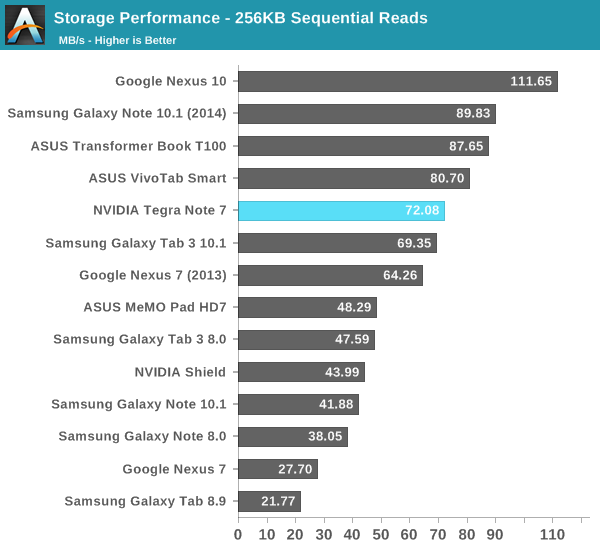

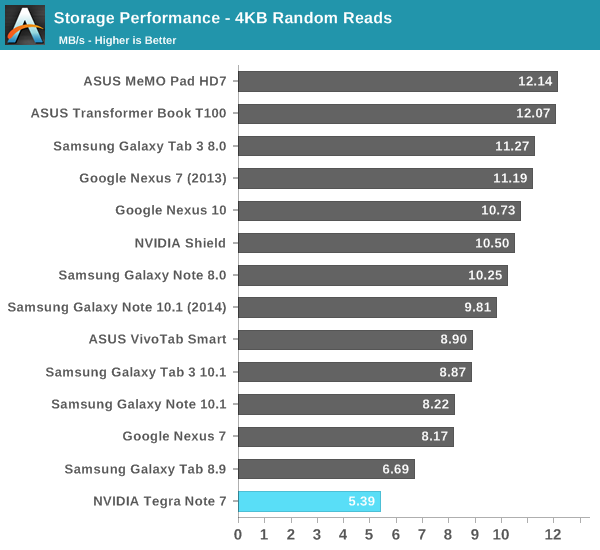
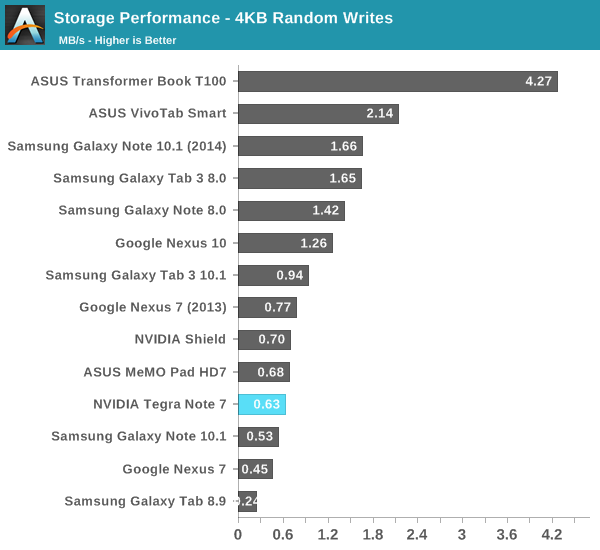
The Tegra Tab starts out strong with relatively fast sequential reads, but then starts falling behind. It’s ahead of the old Nexus 7 in sequential writes, but its random performance suffers. It’s clear that storage performance is one of the areas that took a hit on the Tegra Note. The upside however is that there’s a microSD card in Tegra Note, although SD isn’t exactly going to give an uplift on random read or write speed versus internal storage.


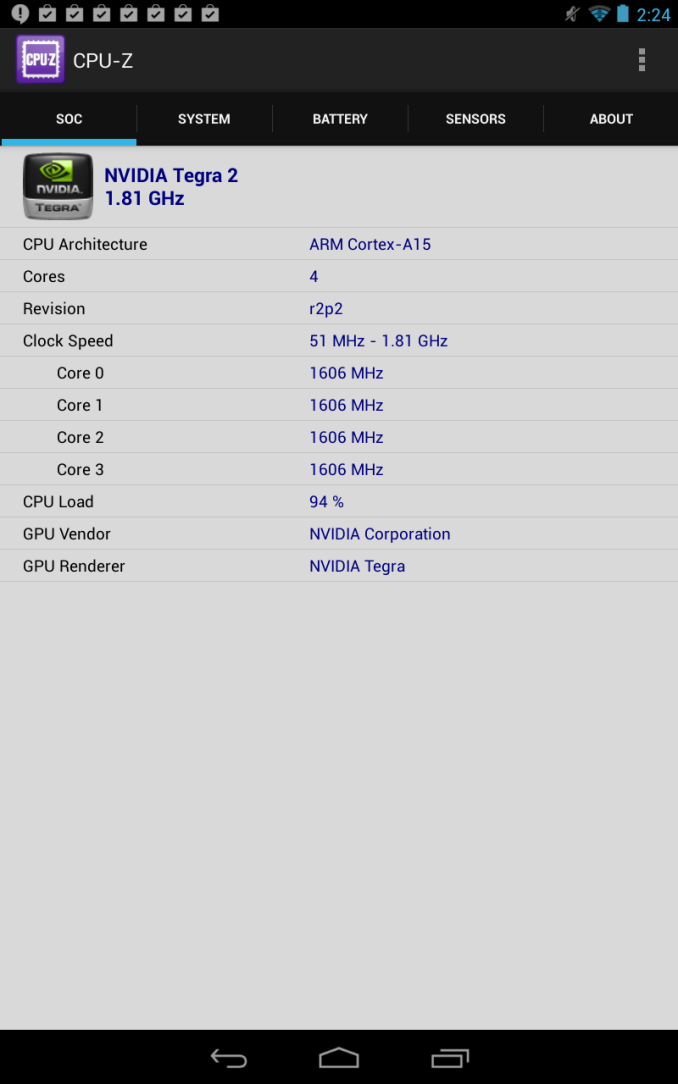
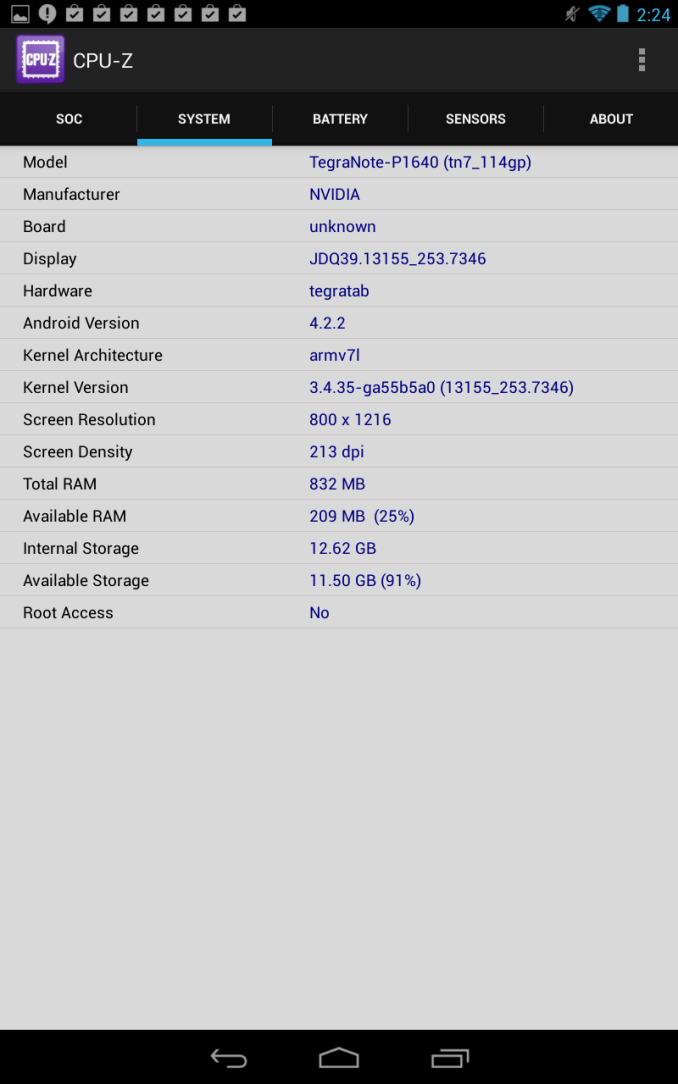
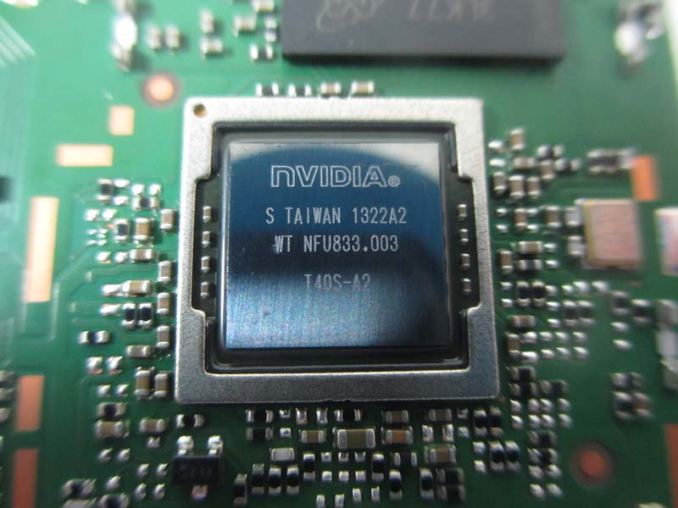








87 Comments
View All Comments
bleh0 - Tuesday, November 12, 2013 - link
No reason to get the Nexus 7 anymore. Outside of the display and a few other things the Tegra Note seems to be the superior device.Pirks - Tuesday, November 12, 2013 - link
yeah, and especially for gaming it's absolutely top notch, just like iPad, but more than twice cheaper, I'll preorder a couple more Tegra Notes today for my buddies in commie-infested Canada LOLDa W - Tuesday, November 12, 2013 - link
Commie-infested Canada? What Canada you talkin' bout? Sure ain't good ol western Canada, we shot all those damn commies a while ago!Pirks - Tuesday, November 12, 2013 - link
I'm talking about high taxes and "free" waitlist laden healthcare, smells like a commie to me :Pquickbunnie - Tuesday, November 12, 2013 - link
One of the pictures says tegra note 3 instead of 7.Also, shouldn't the white point average be a deviance from 6504 and ordered from smallest to largest? Currently the worst offenders are on top, inconsistent with all the other display graphs.
Hrel - Tuesday, November 12, 2013 - link
Not even past the first page, Asus Nexus 7 wins. Resolution, by far. It doesn't even cost more, it costs less... wtf?UpSpin - Wednesday, November 13, 2013 - link
Out of the resolution (and with it the required more RAM) I don't see any other advantages the Nexus 7 offers.The Tegra Note 7 is, prorably, more intended for young people, maybe those who study, with a small focus on gaming:
- Much faster SoC
- Pressure sensitive note taking to properly annotate PDF documents or take notes (awkward on the Nexus 7), the only other option to take proper notes is the the much more expensive Galaxy Tablet with a WACOM digitizer.
- better sound, due to stereo front facing speakers
- SD-Card support, which, in my opinion, for a tablet, is major advantage to load larger movies etc. on the tablet.
- $30 less expensive
So considering the price and the features, I think it's a great tablet, and depending on the usage, offers more than the Nexus 7.
Still, I hope they also release a Tegra 10 Note, for maybe $300, with a HD Display and note taking capability, the would be awesome and a Galaxy Tab Note killer.
Yojimbo - Friday, November 15, 2013 - link
<quote> The Tegra Note 7 is, prorably, more intended for young people, maybe those who study, with a small focus on gaming </quote>True, except for one thing. A 7 inch tablet seems small for full-time note-taking. 7 inches is a good size for using at various times throughout the day, but if I were a full-time student using it hours each day and expected to do so for years, I would definitely demand something at least 10 inches, preferrably larger, say 12 or 13.
Hrel - Tuesday, November 12, 2013 - link
Nvidia is doing something kinda weird lately. They're taking chances, very safely. It'll be very interesting when all these products reach a stage of maturity. 2015/2016 maybe?andrewaggb - Tuesday, November 12, 2013 - link
I agree. They are interesting to watch at the moment. Losing out on all 3 console deals and the vast majority of the tablet/phone market leaves you with a hole to fill. I hope they pull through.They're in a similar situation to AMD, but seemingly doing more about it.